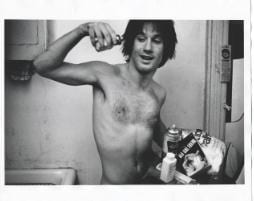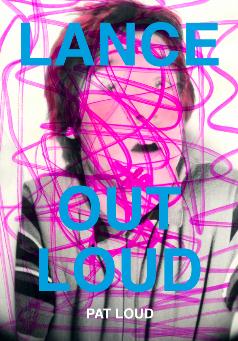Pat Loud says she had one big wish as she was putting together her new book, Lance Out Loud, a tribute to her late son Lance Loud.
“I wanted the book to be about how proud I am of Lance, about all the aspects of his life, not some sort of obituary. There’s enough sadness in the world.”
The coffee-table book, full of recollections about Loud from friends, peers and family, also features photographs of the playful Lance as he posed with members of his rock band The Mumps and hobnobbed with various celebrities (including Julie Newmar, Debbie Harry and Gus Van Sant).
It’s a vibrant, colourful book, but it also touches on the pain Loud suffered as a gay man who came of age in the 1970s: he would go on to grapple with addiction and ultimately die of AIDS-related causes in 2001.
The Loud family’s rise to fame is now media legend. In 1971, TV producer Craig Gilbert approached them and asked them to be the subjects of his documentary program. A crew captured the family in everyday situations, then 300 hours of footage were edited down to 12 episodes of a show titled An American Family, which aired on PBS in 1973.
The show immediately attracted strong ratings, and it showed the marriage of parents Pat and Bill crumbling and ending in divorce. The show became a sensation, gracing the cover of Newsweek, and set off a huge debate over whether the family had been manipulated and what exactly constituted a mediated reality. Had Gilbert been fair to the Loud family?
The other unforeseen fallout was that the eldest Loud child, Lance, was coming out as the show was shot. Not only is An American Family seen as the granddaddy of all reality TV (it is cited as the inspiration for MTV’s The Real World), but Lance is thought to be the first out gay character on an American TV show.
Pat says that when the show aired it was “a dreadful experience. We were thrown under the bus.” But she also says it actually made her family much closer. They banded together and did their own media tour, appearing on The Mike Douglas Show and Dick Cavett, claiming the series had misrepresented them by focusing only on the darker part of their existence.
Pat says Lance was thrust out, very publicly, as a gay man, at the very early stages of gay liberation, putting huge pressure on him. “Lance was so castigated by many in the press . . . It was a terrible burden for him to be so publicly gay, at such a young age.”
Loud struggled with the burden of his celebrity. “It was too much for him, too soon. He often acted like it was easy, but I know it wasn’t.”
Loud would go on to write about celebrity culture, penning articles for Details and The Advocate.
Pat says the onset of AIDS was especially harsh for a mother to watch. “In 1987, I remember going into a hospital with him here in LA, and it was devastating to see all the gay men who were so ill. So many great talents died. I’m glad he lived the life he did — I think he knew he wasn’t going to be here long, so he packed a lot in. I think his philosophy was to jump in and do something and worry about whether or not it was the right thing to do later.”
Ultimately, Lance had one wish for his parents: that they would reconcile. They did, in his final years of life, and still live together today.
Watch An American Family: Introduction on PBS.


 Why you can trust Xtra
Why you can trust Xtra


